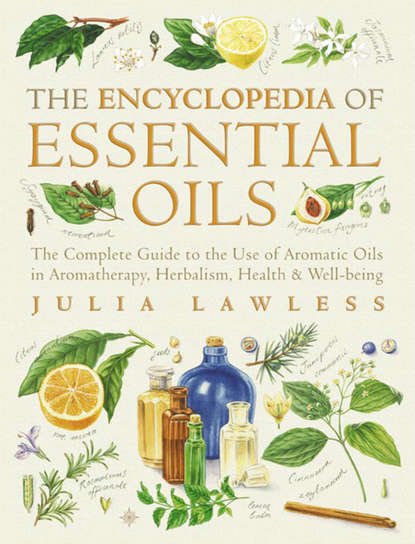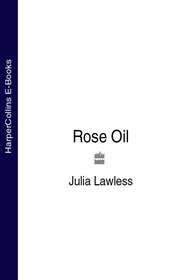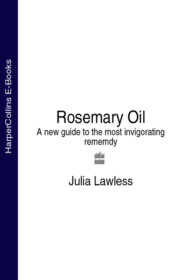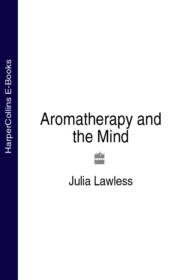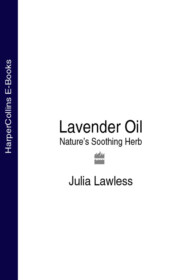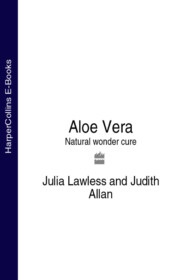По всем вопросам обращайтесь на: info@litportal.ru
(©) 2003-2024.
✖
Encyclopedia of Essential Oils: The complete guide to the use of aromatic oils in aromatherapy, herbalism, health and well-being.
Настройки чтения
Размер шрифта
Высота строк
Поля
CHARACTERISTICS A dark brown, viscous liquid with an intensely sweet, floral, hay-like scent with a herbaceous undertone. It blends well with rose, tuberose, cassie, mimosa, violet, vetiver and herbaceous-type fragrances.
PRINCIPAL CONSTITUENTS The absolute contains capryllic acid, phenols, aliphatics, terpenes, esters, scoparin and sparteine, as well as wax, etc.
SAFETY DATA Sparteine, which is contained in the flowers as the main active constituent, is toxic. In large doses, it causes vomiting, renal irritation, weakens the heart, depresses the nerve cells and lowers the blood pressure, and in extreme cases causes death.
AROMATHERAPY/HOME USE None.
OTHER USES Used in soaps, cosmetics and high-class perfumery; also as a flavour ingredient in sweet rich ‘preserves’, alcoholic and soft drinks.
BUCHU (#ulink_9c72029d-8f8b-52b7-b88d-a9db0f62a7cb)
Agothosma betulina
FAMILY Rutaceae
SYNONYMSBarosma betulina, short buchu, mountain buchu, bookoo, buku, bucca.
GENERAL DESCRIPTION A small shrub with simple wrinkled leaves about 1–2 cms long; other much smaller leaves are also present which are bright green with finely serrated margins. It has delicate stems bearing five petalled white flowers. The whole plant has a strong, aromatic, blackcurrant-like odour.
DISTRIBUTION Native to the Cape of Good Hope in South Africa, it now grows wild all over South Africa. Dried leaves are exported to Holland, England and America.
OTHER SPECIES There are more than twelve so-called Barosma species in South Africa – the ‘true’ buchus are B. crenulata (contains high amounts of pulegone, a toxic constituent), B. serratifolia and B. betulina.
HERBAL/FOLK TRADITION The leaves are used locally for antiseptic purposes and to ward off insects. In western herbalism, the leaves are used for infections of the genito-urinary system, such as cystitis, urethritis and prostatitis. Current in British Herbal Pharmacopoeia 1983.
ACTIONS Antiseptic (especially urinary), diuretic, insecticide.
EXTRACTION Essential oil by steam distillation from the dried leaves.
CHARACTERISTICS Dark yellowy-brown oil with a penetrating minty-camphoraceous odour.
PRINCIPAL CONSTITUENTS Diosphenol (25–40 per cent), limonene and menthane, among others.
SAFETY DATA Should not be used during pregnancy. The toxicity of buchu is unknown but since B. betulina yields oils high in diophenols and B. crenulata yields oils high in pulegone, they should both be regarded as questionable at present.
AROMATHERAPY/HOME USE None.
OTHER USES A tincture, extract and oleoresin are produced for pharmaceutical use. Limited use in blackcurrant flavour and fragrance work, for example colognes and chypre bases.
C
CABREUVA (#ulink_0de8be82-3dd4-54ae-ac97-9133cd8e4a04)
Myrocarpus Fastigiatus
FAMILY Fabaceae (Leguminosae)
SYNONYMS Cabureicica, ‘Baume de Perou brun’.
GENERAL DESCRIPTION A graceful, tall tropical tree, 12–15 metres high, with a very hard wood, extremely resistant to moisture and mould growth. It yields a balsam when the trunk is damaged, like many other South American trees.
DISTRIBUTION Found in Brazil, Paraguay, Chile and north Argentina.
OTHER SPECIES Many varieties of Myrocarpus yield cabreuva oil, such as M. frondosus. It is also botanically related to the trees which yield copaiba, Peru and Tolu balsam.
HERBAL/FOLK TRADITION The wood is highly appreciated for carving and furniture making. It is used by the natives to heal wounds, ulcers and obviate scars. It was once listed in old European pharmocopoeias for its antiseptic qualities.
ACTIONS Antiseptic, balsamic, cicatrisant.
EXTRACTION Essential oil by steam distillation from wood chippings (waste from the timber mills).
CHARACTERISTICS A pale yellow, viscous liquid with a sweet, woody-floral scent, very delicate but having great tenacity. It blends well with rose, cassie, mimosa, cedarwood, rich woody and oriental bases.
PRINCIPAL CONSTITUENTS Mainly nerolidol (80 per cent approx.), farnesol, bisabolol, among others.
SAFETY DATA Non-toxic, non-irritant, non-sensitizing.
AROMATHERAPY/HOME USE
Skin Care: Cuts, scars, wounds.
Respiratory System: Chills, coughs.
Immune System: Colds.
OTHER USES Fragrance component and fixative in soaps and high-class perfumes, especially floral, woody or oriental types. Previously used for the isolation of nerolidol, now produced synthetically.
CADE (#ulink_3a5cb9a7-93b9-5bde-b27c-5983946ddc7b)
Juniperus oxycedrus
FAMILY Cupressaceae
SYNONYMS Juniper tar, prickly cedar, medlar tree, prickly juniper.
GENERAL DESCRIPTION A large evergreen shrub up to 4 metres high, with long dark needles and brownish-black berries about the size of hazelnuts.
DISTRIBUTION Native to southern France; now common throughout Europe and North Africa. The tar is produced mainly in Spain and Yugoslavia.
OTHER SPECIES There are many varieties of juniper which are used commercially apart from the prickly juniper: J. communis produces juniper oil, J. virginiana produces Virginian cedarwood oil, and in Yugoslavia an oil is produced from the fruits and twigs of J. smreka.
HERBAL/FOLK TRADITION Used in the treatment of cutaneous diseases, such as chronic eczema, parasites, scalp disease, hair loss, etc. especially in France and other continental countries. It is also used as an antiseptic wound dressing and for toothache.
ACTIONS Analgesic, antimicrobial, antipruritic, antiseptic, disinfectant, parasiticide, vermifuge.
EXTRACTION The crude oil or tar is obtained by destructive distillation from the branches and heartwood (usually in the form of shavings or chips). A rectified oil is produced from the crude by steam or vacuum distillation. In addition, an oil is occasionally produced from the berries by steam distillation.
CHARACTERISTICS The rectified oil is an orange-brown, oily liquid with a woody, smoky, leatherlike odour. It blends well with thyme, origanum, clove, cassia, tea tree, pine and medicinal-type bases.





